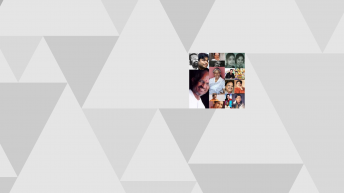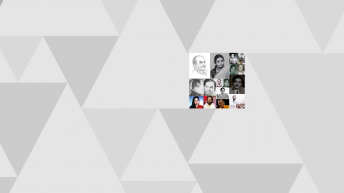Darbari Kanada, or simply Darbari, is a Hindustani raga in the Kanada family, which is thought to have originated in Carnatic music and brought into North Indian music by Miyan Tansen, the legendary 16th century composer in emperor Akbar’s court. This tradition is reflected in the name itself; Darbar is the Persian derived word in Hindi meaning “court.” As the most familiar raga in the Kanada family, it may sometimes also be called Shuddha Kanada or pure Kanada. It belongs to the Asavari thaat.
Darbari is a grave raga, played deep into the night, considered to be one of the more difficult to master, and with the potential for profound emotional impact. The ascension of aroha is in the lower and middle octaves. In the arohi the note Ga (gandhar) komal is used in a weak manner and a slow vibrato (andolan) on this note. The association of the notes Ni and Pa sounds pleasing. Its Vadi swar is Re and Samavadi is Pa.
Arohanam: S R (R)g, (R)g
Avarohanam: (M)g, (M)g M (S)R, S
For reference, the set of notes in the Asavari thaat is S R g M P d n, and for Darbari, the role of the komal gandhar is crucial.
(Source: wikipedia)
###






darbari is an style on indian music. thanks for making it remember.
“Ore manam ore gunam” from tamil movie “Villain” is also set in this raga. Composer- Vidyasagar
Enjoyed the Darbari Kanada post…Here’s one more for your list..
Devan Ke Pathi Indra…
Movie: Swati Thirunal
Singer: SPB
Link : http://www.youtube.com/watch?v=iFZ7u5GPrwI&p=65AB18B2F4F8F5B2&playnext=1&index=6
Thanks Minisantu. This song has been added to this list.
Thanks Shriram. This song has been added to this list.
Hi
This is great. with accompanied video as well.
How about Nee Kaatru Naan Maram…. Can’t say which movie it is from.
Regards
Badri
Hi,
Marugo marugo song (Sung by Kamal, Chithra, Music -Mastero Ilayaraja, Movie – Sathi leelavathi) is also set in darbari kaanada
Regards
Ram
good research
good research … this film people seem to chose same ragas which become hit songs .. mostly carnatic base songs catch th lime light
good research … this film people seem to chose same ragas which become hit songs .. mostly carnatic base songs catch the lime light
doubtfully great work:::::::::::::::::::::
but mam u forget to add an evergreen song from malayalam movie “nadhi” which is “aayiram padasarangal”…
please add that too
enaku pedita padall. is also in this raga
Nee korinaal from 180 is also in this ragam right?
I never expected that I can get such a fantastic collection in the internet. My blessings to you.
Amazing…
I have one (if wrong someone pls correct me)
Song: marudamalai maamaNiyE murugaiyaa
Singer: Madhurai SOmasundharam
music: Kunnakkudi VaithyanAthan
Lyrics: Kavignar KaNNadhAsan
Movie: Dheivam – 1971
Ponnill kilichu ninnu Chandrika vasantham – sallapam 1996
http://www.youtube.com/watch?v=8vEDgqS8swY
Another Darbari Kanada from MAdrasPattinam “I have also done raga based songs. For instance, Pookal Pookum is based on Darbari Kaanada….” from “http://www.videos.behindwoods.com/videos-q1-09/director-interview/g-v-prakash-kumar.html”
remember. old is always gold ..
nee korinaal
vaanam maaratha! – dhinam
theeramale
megam thuraatha!
kindly let me know what Kannada Film songs are in raag garbari kanada?
Enai Konja Konja (Tamil)
Movie: Aadhi
Language: Tamil
Singers: Hariharan, Sujatha
Music Director: Vidyasagar
Year: 2006Are you sure is this Dharbari Kanada?
i really like this post ..
as i can say OLD IS GOLD
Good information,its very interesting information,It’s presented very well.Thanks a lot for sharing.Keep blogging
Thanks 🙂
kareyE kOgile mAdhavaA..
http://www.youtube.com/watch?v=o7nClveIsAI
kareyE kOgile mAdhavanA..
http://www.youtube.com/watch?v=o7nClveIsAI
Good you have removed that song. As it is in Miyan ki Malhar / Amruthavarshini
what about kannada films?
Thankyou for this site. Are these songs in Darbari Kannada raga?
https://www.youtube.com/watch?v=R-TnffUtdvA
https://www.youtube.com/watch?v=HOPcU-eDSmk
Katre en (rhythm), malware mounama and naane varugiren (OK kanmani) are typical examples in tamil … In Malayalam aayiram paadasarangal, ponnil kulichu ninnu, dhwanitharanga tharalam, junile nilamazhayil, priyanu maathram njaan, manimuttathavanipanthal, shalabham vazhimaaruma, allimalarkaavil, idayaraga ramana dukham, aathmavin pusthakathalil, eeswarachinthayithonne, azhake nin etc are all in darbari I guess!!!
Kanavu Kanda Kaadhal
https://www.youtube.com/watch?v=qpQk4puv_fg